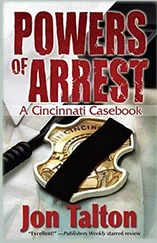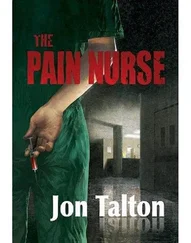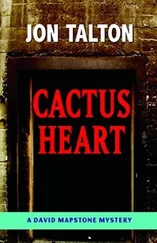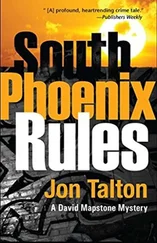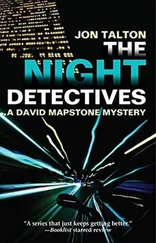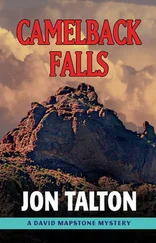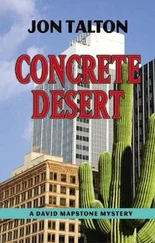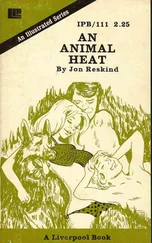Jon Talton - Dry Heat
Здесь есть возможность читать онлайн «Jon Talton - Dry Heat» весь текст электронной книги совершенно бесплатно (целиком полную версию без сокращений). В некоторых случаях можно слушать аудио, скачать через торрент в формате fb2 и присутствует краткое содержание. Жанр: Полицейский детектив, на английском языке. Описание произведения, (предисловие) а так же отзывы посетителей доступны на портале библиотеки ЛибКат.
- Название:Dry Heat
- Автор:
- Жанр:
- Год:неизвестен
- ISBN:нет данных
- Рейтинг книги:3 / 5. Голосов: 1
-
Избранное:Добавить в избранное
- Отзывы:
-
Ваша оценка:
- 60
- 1
- 2
- 3
- 4
- 5
Dry Heat: краткое содержание, описание и аннотация
Предлагаем к чтению аннотацию, описание, краткое содержание или предисловие (зависит от того, что написал сам автор книги «Dry Heat»). Если вы не нашли необходимую информацию о книге — напишите в комментариях, мы постараемся отыскать её.
Dry Heat — читать онлайн бесплатно полную книгу (весь текст) целиком
Ниже представлен текст книги, разбитый по страницам. Система сохранения места последней прочитанной страницы, позволяет с удобством читать онлайн бесплатно книгу «Dry Heat», без необходимости каждый раз заново искать на чём Вы остановились. Поставьте закладку, и сможете в любой момент перейти на страницу, на которой закончили чтение.
Интервал:
Закладка:
Some days, needing human contact or fresh data, I came up from my quarry of records. Being a native had its advantages, even in a place where nine out of every ten people seemed to come from the Midwest. I knew people. An old high school buddy was a public relations official at the Salt River Project, the nation’s oldest and largest reclamation effort. He spent an afternoon teaching me about the 1,300 miles of canals and five reservoirs that allowed Phoenix to exist. I learned about flow rates of various canals, and the impediments that would cause a body to flow this way, not that. The reeds, trees, and swimming children were long gone. But the canals regularly were a dump for trash, evidence, a surprising number of shopping carts, and dead people.
Using 1948 maps, I tried to trace the route Pilgrim’s body might have taken. It wasn’t easy. Even when I was a boy, the city had been relatively compact. We could drive ten minutes and be in the citrus groves or cotton fields. Back then, streets quickly gave way to roads bracketed by irrigation ditches-laterals-and shaded by giant cottonwood trees. The land had been even more pastoral in 1948. But now, subdivisions, shopping strips, car dealerships, malls, and golf courses covered what was once one of the great farming valleys on the planet. The laterals were mostly underground now, as congested seven-lane streets conquered the charming farm roads. But I did what I could. I walked along the bank of the Arizona Canal, by Seventh Street, where the farmers heard the loud voices and the gunshot the night Pilgrim disappeared. I drove along Fifty-first Avenue, where the lateral once flowed that carried Pilgrim’s body until it could travel no more. What was once a lettuce field had become a decaying commercial strip in a transitional suburb. It was no more than two blocks from where George Weed’s body was found on April Fool’s Day.
Another friend had charge of the historical photo collection at Bank One, a little-known cache of downtown history. Through her, I found pictures of the Pla-Mor Tap Room, Pilgrim’s hangout on Central Avenue downtown. It looked suitably dark and seedy, and had been replaced by an office building in the 1950s.
One morning, before the heat became unbearable, I slipped on walking shoes and went downtown. Finally, the police reports, newspaper clippings, and black-and-white photos were not enough. I needed to walk where John Pilgrim had walked. For the moment, this was my Civil War battlefield, my Johnsonian London. I added my imagination to the reports, the stories conjured by Grandmother and Grandfather when I was a child, my own memories. In 1948, downtown held a handful of Art Deco towers, twelve movie houses, eleven hotels, five department stores, countless bars. The rooftops were festooned with radio towers and neon signs-Hotel Westward Ho, Hotel Adams, Valley National Bank. By comparison, downtown Fort Wayne or Akron would have seemed like Manhattan. But they were not surrounded by miles of orange groves, flower gardens, and green fields, all guarded by the ancient mountains and the vast Sonoran Desert.
I walked along deserted sidewalks on Central, my ears assaulted by passing cars playing rap. Cities all over America had enjoyed a downtown renaissance. Not my hometown. But in my mind the sidewalk was busy with people, alive with storefronts, as it had been even in my youth. That was before the real estate boys ran to the edges of the city and paved over the orange groves, the flower gardens, and the green fields.
The Pla-Mor Tap Room was just a block from the old federal building, where Pilgrim would have worked. It was easy to see why it was a hangout. Why did the place fascinate me? This old city would have heard the constant sound of train whistles. Union Station was the center of activity, of comings and goings. It now sat empty, fenced and always in danger of thoughtless demolition. But in 1948, it was a Soviet agent’s portal to mischief. What had Dimitri and Pilgrim talked about, the last time they met? Who was armed, and what happened next? I watched the dates stamped in the sidewalks: 1928…1936…1947.
It was May now, and every day broiled above a hundred degrees. I surrendered to casual clothes-even then the fabric stuck to my sweat-soaked skin. Palo verde blossoms covered the sidewalks in a yellow-green dust. Overhead misters spewed their smoky-looking balm at restaurant patios. The glare off the cars made it appear that they were firing futuristic pulse weapons at each other. The newspaper and TV broadcasts settled into their summer staples of forest fires, children drowned in swimming pools, and migrants suffocated in the locked tractor-trailer rigs of smugglers. In the Republic , Lorie Pope wrote a story about a subdivision of 80,000 houses planned for west of the White Tank Mountains. “Master planned community” they called it. I wondered if their master plan included water. A brush fire closed Interstate 17 to the north, trapping well-off Phoenicians from their weekend escape to cabins in the High Country. The fire made its contribution to the soup that obscured the mountains.
I was in danger of spending too much time between my ears, as a friend once put it. But every day I was reminded of George Weed’s world, whether by the transient sweeping through Starbucks trying to grab somebody else’s coffee from the bar, or by the sight of trash-filled shopping carts lined up outside the central library like cars at a drive-in. Homeless children wandered Van Buren. Some homeless adults burned a Victorian house awaiting restoration. A woman attending a convention was attacked-a homeless man was blamed. Bedraggled men with skin corrugated by the sun huddled in little shade spots. Everybody had a theory. Nobody knew what to do. It’s a shame. It’s an alternative lifestyle, and who are we to judge? One day I went to the carwash on Van Buren and Grand, where a tall young guy was bumming change. He wore a filthy do-rag and looked as if he hadn’t bathed in a month. When he came to me, I just shook my head. Then he approached a dark-skinned Latino man who wore a sweat-stained shirt emblazoned with a landscaping company logo. The Latino rebuffed the transient, too. As the guy walked away, the landscaper looked at me and shrugged. It was a look that said, there will always be two kinds of people, those who work and those who don’t.
I found no comfort in my usual hangouts. They seemed to conjure strange signs and premonitions, if even in absurdities. Drinking in a dark corner of Durant’s, I overheard a conversation. It was typical guy talk. But the phrases gradually drew my attention: “You know that’s got to be so damned sweet,” “Yeah, my son had the hots for her,” and “cheerleader legs,” a familiar name, and “What a waste she married that professor guy. Maybe she’s repressed…” I eased my head around to see who was talking, and it was a couple of old career guys from the sheriff’s office. Talking about Lindsey. They couldn’t see me, and I resisted any Frank Sinatra-like impulses to walk over and defend my wife’s honor.
I felt more of a melancholy detachment than a jealous zeal. My only contact from Lindsey that week came one day when I was on the Internet. A console suddenly popped up on the screen of my Mac, and there in the console was a high-resolution color photo of Lindsey smiling, blowing me a kiss. Then the console disappeared, with no trail left on the history directory of my browser. The horny old deputies would never know how beautiful Lindsey looked when she was hot and sweaty, working in her garden, her brown-black hair pulled back in a ponytail. Or her native kindness, whether in caring for the old tomcat or in reading every article I wrote in my history professor days and pronouncing them brilliant. And as for their observation about being repressed, Lindsey would say, “Repressed is the word people use when they mean ‘not like me.’” I would say the reality of Lindsey is beyond any old man’s fantasy. Ah, I was spending too much time in my own head, not a good thing.
Читать дальшеИнтервал:
Закладка:
Похожие книги на «Dry Heat»
Представляем Вашему вниманию похожие книги на «Dry Heat» списком для выбора. Мы отобрали схожую по названию и смыслу литературу в надежде предоставить читателям больше вариантов отыскать новые, интересные, ещё непрочитанные произведения.
Обсуждение, отзывы о книге «Dry Heat» и просто собственные мнения читателей. Оставьте ваши комментарии, напишите, что Вы думаете о произведении, его смысле или главных героях. Укажите что конкретно понравилось, а что нет, и почему Вы так считаете.

